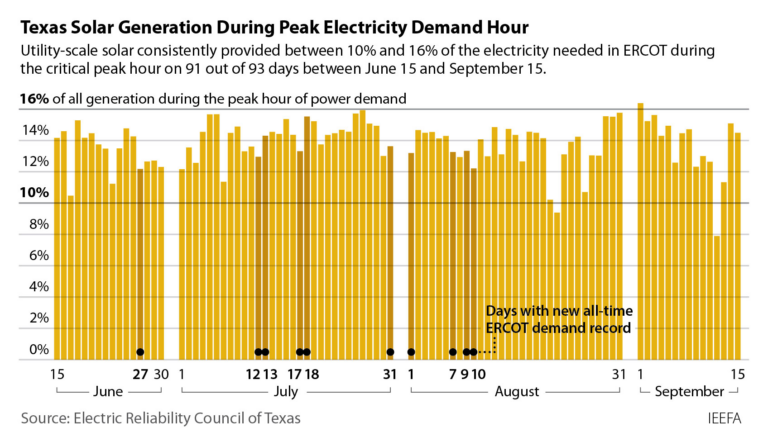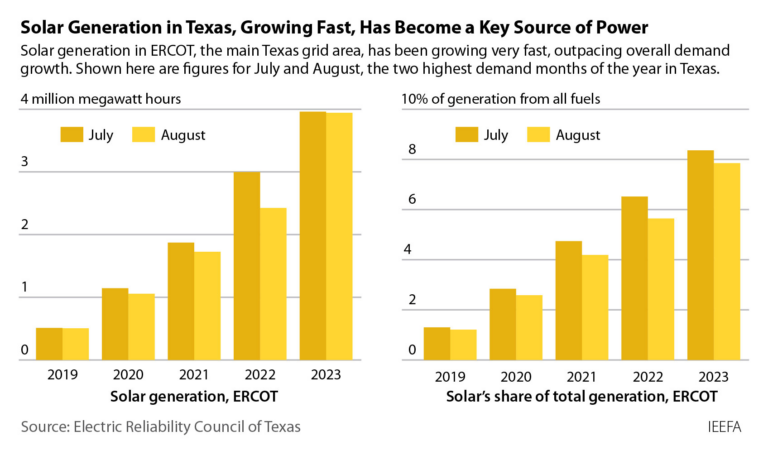 Electricity demand in Texas set records again this summer as population growth and searing temperatures pushed consumption up sharply. But the high reliability of utility-scale solar power during peak demand hours, boosted by the rapid expansion of solar capacity over the past year, played a significant role in keeping the grid operating smoothly.
Electricity demand in Texas set records again this summer as population growth and searing temperatures pushed consumption up sharply. But the high reliability of utility-scale solar power during peak demand hours, boosted by the rapid expansion of solar capacity over the past year, played a significant role in keeping the grid operating smoothly.Let’s start with the consistency of solar. From June 15 through Sept. 15, 2023—the highest power use period of the year in Texas, by far—solar provided more than 10% of the peak electric demand on 91 of those 93 days. That’s the hour, usually ending at 5 p.m. or 6 p.m., when the Electric Reliability Council of Texas (ERCOT) faces the most electricity use every day. Solar regularly provided between 10% and 16% of the peak-hour electricity needed, averaging 13.8% across those 93 days. That’s particularly impressive because those peak demand hours usually come later in the day than when solar generation is not at its highest.
The figures undercut a key argument used by fossil fuel advocates when talking about renewables—that they are not reliable or predictable. The data proves otherwise. Solar is both reliable and predictable.

The growth of solar generation during the two highest-demand months of July and August has been extraordinary in the past few years. In 2019, utility-scale solar provided just over 500,000 megawatt-hours (MWh) of power during each of the two months, a bit more than 1% of all electricity needed. This year, it delivered more than 3.9 million MWh each month, about 8%. But this overall figure vastly understates solar’s importance, since all solar generation occurs during the higher-demand daylight hours.

With temperatures soaring in Texas again this summer, the grid set 10 new demand records, with the latest set on Aug. 10, when 85,464 megawatts (MW) was needed at the peak. That was up 6.6% from 2022’s all-time record high on July 20, 2022, when 80,148MW was needed. But consider this: Solar generation on Aug. 10, 2023 was 10,435MW, up 2,355MW, from the 8,080MW produced on July 20, 2022—almost half of the additional power needed.
Similarly, wind generation was 9,553MW during this peak hour on Aug. 10, compared with 7,369MW on July 20, 2022, an increase of 2,184MW. Taken together, wind and solar produced 4,539MW more power than when the previous record was set, or 85% of all the extra power needed.
This summer also gave us a glimpse of the powerful role that battery storage can play in ERCOT. In 2020 there was less than 300MW of installed storage capacity across the system, but by this summer the total had climbed to more than 3,500MW. According to local reports, the battery capacity played a critical role in stabilizing the grid Sept. 10 when a number of factors almost forced ERCOT into instituting rolling blackouts.







